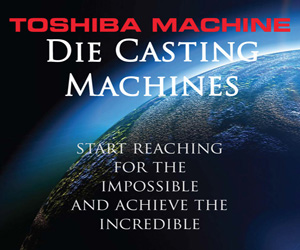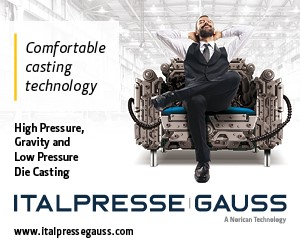Die castings are designed to meet structural criteria in many applications.
- Formulas for stress and strain and finite element analysis (FEA) commonly employed to optimize product designs.
- Ultimately verified with physical tests on final production parts and assemblies.
Mechanical Properties & the Skin Effect
Mechanical properties of die casting alloys are compiled from tests performed on specially prepared specimens. The properties of the specimens may vary from the actual die castings, primarily because of solidification patterns. Metal at the surface of a die casting solidifies most rapidly, forming a dense, fine grained structure with higher strength than underlying metal, this is often called the “skin effect.”
Due to rapid solidification in the die, a die castings outer skin has a dense, fine grained structure with a higher strength than underlying metal. The skin extends inward to a typical depth of 0.015 to 0.020” (0.38 to 0.50mm). The rapid solidification of the skin tends to drive porosity to the center of the section, leaving the skin itself relatively free from porosity, as shown in the micrograph1 in the video. Therefore, design parameters such as wall thicknesses and changes in mass of interconnected features may cause the mechanical properties of the die casting to vary somewhat from tabulated data and from other features in the same casting.
Reference:
- Borland, Andrew and Tsumagari, Naoyuki. The Significance of the Die Cast Skin Pertaining to the Fatigue Properties of ADC12 Aluminum Alloy Die Castings, North American Die Casting Association, Transaction T06-031, 2006.








